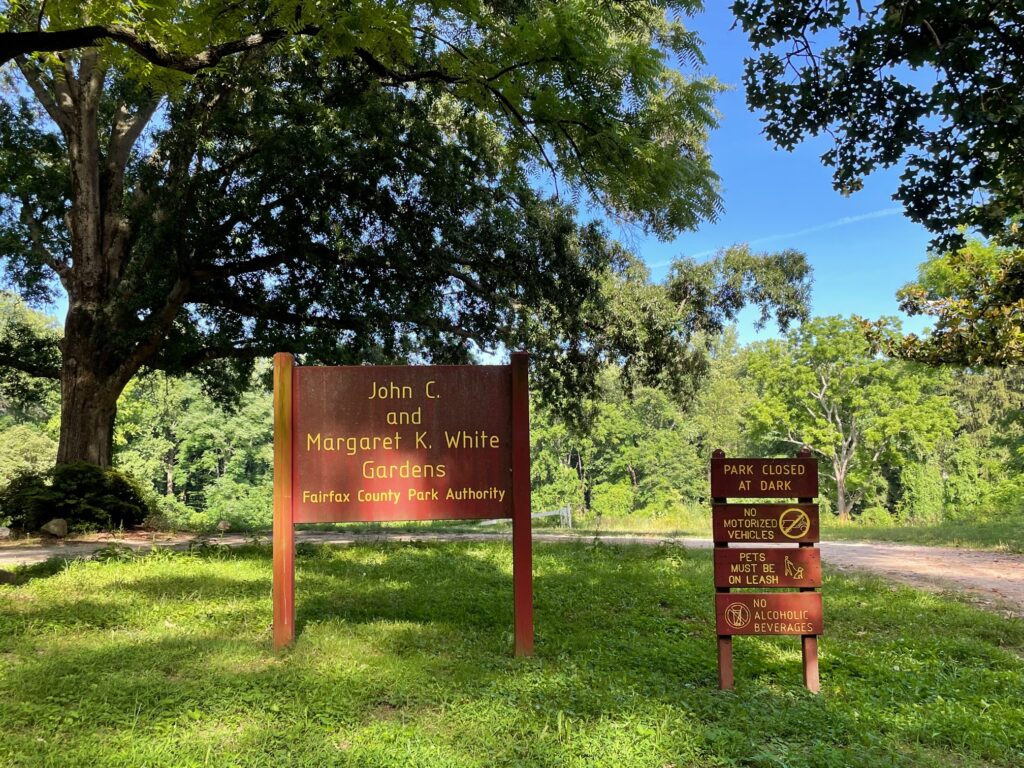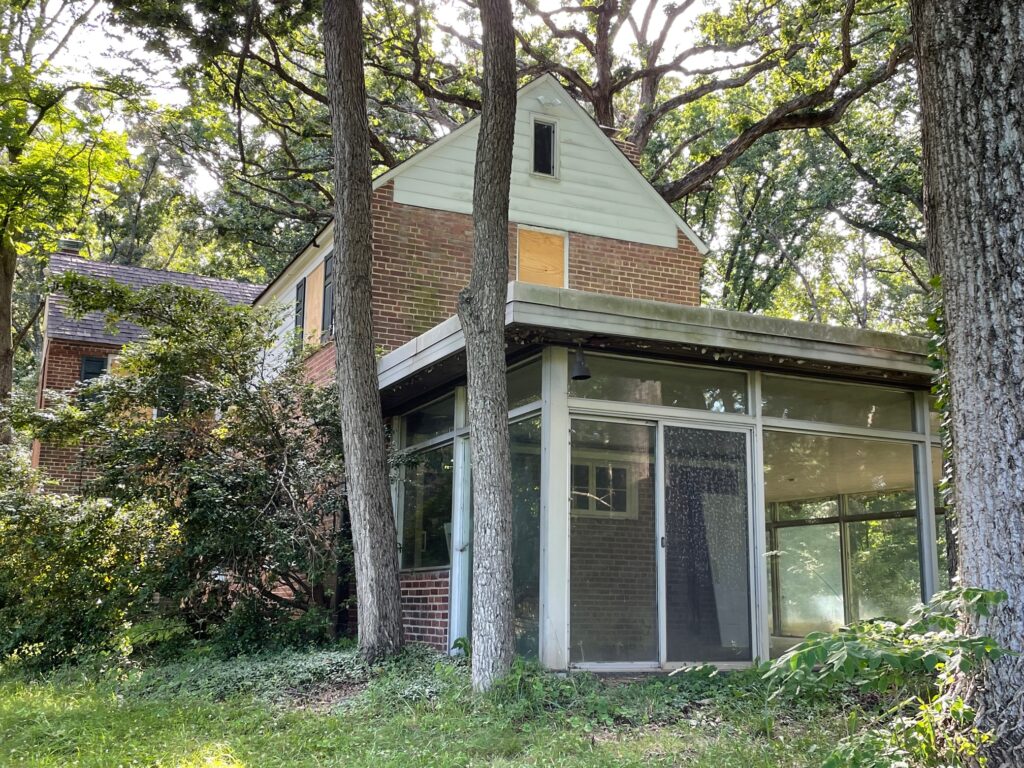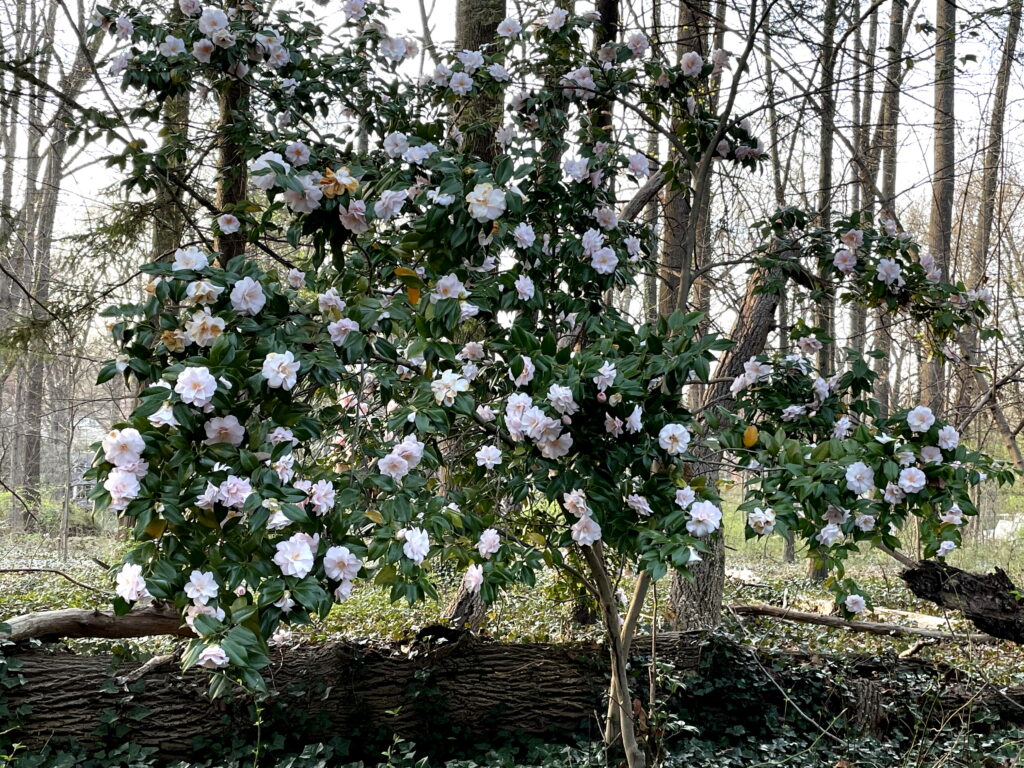Park Authority drops plans for a resident curator at the White Gardens

The Fairfax County Park Authority dropped plans to install a resident curator in the house at the John C. and Margaret K. White Gardens, park officials announced at a virtual public meeting on Feb. 27.
Instead, the house will be torn down, and the horticultural treasures and meadow will be restored and maintained as a community park.
The Park Authority had been in negotiations with a resident curator applicant but decided not to proceed due to an “enormous amount of comments” in opposition from the community and the White family, said David Buchta, the manager of the Park Authority’s Heritage Conservation Branch.
Three generations of the White family participated in the public meeting.

Margaret White deeded the property, in the Falls Church area of Mason District, to Fairfax County in 1999. Her goal was to ensure the preservation of the horticultural treasures – rhododendrons, azaleas, and camellias – that she and her husband cultivated. Her family said she didn’t care if the house was saved.
“Based on our renewed commitment to the park, the house will not be included in future plans for the horticulture park,” Buchta said. Demolition could start this spring or summer.
Related story: Resident curator program for the White Gardens is on hold
The county had already spent $250,000 on a new HVAC system and other improvements to the house using park maintenance funds and bond money, Buchta said. Despite that, “the county determined the cost of maintaining the house wouldn’t be cost-effective.”
The barn, dating from about 1876, will be preserved. Interpretive signs will be installed throughout the park highlighting the horticultural resources and the contributions of the White family, said Laura Grape, director of the Park Authority’s Resource Management Division.
According to Grape, the Park Authority will manage the White Gardens with these goals in mind:
- To preserve and enhance the natural and horticultural resources to ensure the most sensitive resources are appropriately maintained and preserved for public enjoyment;
- To provide a high-quality, passive user experience; and
- To promote stewardship through educational and interpretive programs, focusing on the rich horticultural and natural resources of the park.

A key task will be removing the invasive plants that are spreading throughout the property. That will start this summer, Grape said.
Restoration of the horticultural treasures will be done through the clearing of invasive vines from trees, clearing debris from the paths, pruning, and protecting new plantings, she said.
The Park Authority will encourage volunteers from the community to help with that work.
The meadow will be restored, too, said John Burke manager of the Park Authority’s Natural Resources Branch. The county spent $80,000 to recreate the meadow a couple of years ago, but it wasn’t maintained and was taken over by invasives.

The Park Authority will carry out annual ecological inspections and invasive plant control in the meadow and the surrounding forest, reseed the meadow with native plants as needed, and mow when necessary to suppress invasives.
Grape said the Park Authority is exploring ideas for a new structure, like a pavilion, for viewing the horticultural resources.
There are no plans to add restrooms, additional parking, or a new access road. The park entrance will remain at the end of Princess Anne Lane.
Mason Supervisor Penny Gross lauded Margaret White for “having the foresight 20 years ago to preserve the gardens for the community. Otherwise. it would have been lost to developers.”


$250,000 to replace an HVAC in a Single Family Home ?!? Why isn’t someone looking into that?
Those funds included other things, too.
An excellent question. You could effectively tear down the entire house and replace it with a brand new one for $250K.
Why isn’t Roger looking into reading what was actually written, not what he has in his mind?
Roger, you have a good point! How could an HVAC system cost $250,000 for a single family house. We paid $15,000 for our single family house HVAC system — for both air and heat. If they spent that much money they absolutely shouldn’t spend another $15,000 or more to tear the house down. Yes, it costs a lot of money to tear something down. Why can’t they repurpose the house for meetings for gardeners, weddings, etc. They were going to allow a family to live there so it wouldn’t take much to repurpose it. Also, the house has a glass room for growing plants. Seems like with the Park Authority it’s all or nothing!
It amazes me that people “read” an article and then misinterpret what was clearly stated.
Per the article:
“The county had already spent $250,000 on a new HVAC system and other improvements to the house”
Regardless of what anyone thinks of how the money was spent, please try and keep up.
You should not blame the readers for this. The article says $250k was spent on HVAC and other improvements. A typical reader would interpret this wording to mean that the HVAC costs represented a large component of that $250k. Why else would the author single out the HVAC when discussing the amounts expended. (Rhetorical so no question mark.)
The house was fairly far gone when I walked through it. I cannot say whether the County had already spent that $250k on the house before I visited or if they did afterwards. If it was before I saw little indication of it. The barn was a gem. The grounds had gone natural. On the whole it was showing signs of inexcusable neglect. The curator arrangement as outlined to me was asking too much of the potential curator while offering too little in return.
Perhaps the author didn’t have the specifics outside of the HVAC and thus wrote “other improvements”? Seems like a logical reason if so. Regardless, the sentence was clear yet folks decided to misinterpret which leads to multiple absurd comments. These types of comments are what create disinformation which is a huge, huge problem these days. Perhaps we all could just read something (maybe twice) and then whatever you think based off what was reported, comment without distorting facts?
The point is that the county has spent $250,000 on “improvements” to the house, only to then decide to tear it down. Over what period of time was this money spent? And who is making these decisions? Something doesn’t quite seem right.
As “Slow Down” said, why couldn’t the house be re-purposed? Has the Park Authority done any research regarding any non-profits that might want to use and maintain it? Although I could see how parking might be a problem.
Something really does stink to high heaven here. According to this doc, we’re talking about a 2,340 square foot house built in 1939.
https://www.fairfaxcounty.gov/parks/sites/parks/files/assets/documents/naturalcultural/rcp/2017-12-20-whi-hsr-final.pdf
The county spent $250K of taxpayer money on HVAC and “other improvements.” But those improvements left the house in such poor condition that, when it was pursuing the “resident curator” program, the county estimated the curator would have to spend in excess of $270K just to make the home habitable.
https://www.fairfaxcounty.gov/parks/sites/parks/files/assets/documents/naturalcultural/rcp/2021_09_02_whi_adjusted%20treatment%20plan%20final-a.pdf
It should have been obvious from day 1 that this house was a tear down. The fact that the county wasted $250K in taxpayer “fixing” it (plus god only knows how much they spent on various studies and reports) — only to now recommend tearing it down — taxpayer-funded improvements and all — is scandalous.
That doesn’t even get into the fact that the county spent an additional $80K in taxpayer funds to clean up and renovate the garden with absolutely no plan in place to maintain that garden moving forward. My elementary school-aged kids understand that if you don’t maintain a garden, it’s going to be overgrown with weeds. How is it that the Fairfax County Park Authority doesn’t get that?
Right on!
Just two things to mention that have not been brought up so far. The county’s annual budget for parks constitutes .09 percent of the overall budget and that includes libraries as well. Government is supposed to be deliberative and it takes time to get everyone’s ideas into the mix, if you add COVID to the timeline they lost several months while nothing got done.
I agree it would be instructive to see where the breakdown occurred. But I wouldn’t jump to conclusions till then. Remember FCPA is one of the least resourced arms of the county gov’t (next to libraries) and the county has been divesting itself of providing funding to FCPA since at least 2008. FCPA’s priority therefore became making money which it did by raising RECenter membership rates and other rec fees to the point where those are now way too expensive. New FCPA leadership has been trying to address this unsustainable funding model. So it is equally possible that this little park couldn’t get the resources bec after the initial capital investment, which was a bond, there wasn’t enough general funds to go around for upkeep.
Thank goodness the county finally listened to the family and other concerned citizens. A curator for a non historically significant home is weird and unnecessary.
Demoing and removing the home will incur a cost as well, and of course there will be local idiots up in arms about that.
Sometimes we make mistakes and need to change course.
Remember this when the local government asks for yet another bond (tax), regardless of what they say it’s for and just vote NO. The failed Fairfax government continues to have issues of spending taxpayers funding on boondoggles, such as this one or the COVID memorial, then asking for more bond money or keeping property tax rates high when all assessments went up. Until people vote against these politicians, they will continue to abuse & take advantage of taxpayers.
Who is making these recommendations!? What a boondoggle!! No wonder we couldn’t get Accotink dredged – we have morons running the county. Charge fees for parking and levy fines on all the people who conduct car maintenance in the parks and dump their trash and walk their dogs off leash. A simple pay to park gate would generate more than enough revenue. You might even get more locals walking and biking to the parks.
Gosh, this story drew a lot of negative comments. I’m glad the decision was made to demolish the house and focus on the gardens, in accord with the Whites’ wishes. The ornamental and natural features of the garden will be wonderful assets to the community. Celebrate the positive.
Whew! Thanks Tom.